Search result
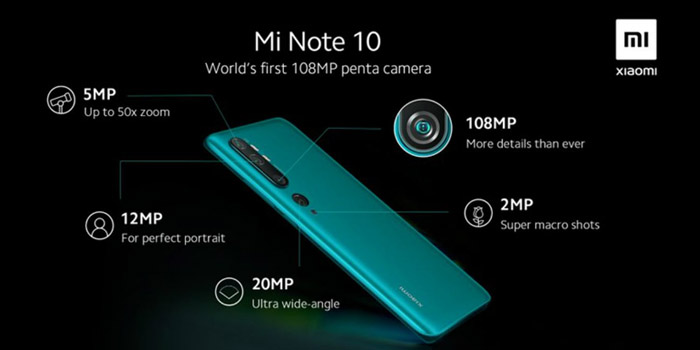
Xiaomi Note 10 series is one of the most awaited smartphone series that is expected to be launched later this week. Much like its predecessor Redmi Note 9 series, the new lineup is going to have more than one devices - that includes standard Redmi Note 10 and all the way up to the Redmi Note 10 Pro Max. In recent weeks, we have seen several leaks about the upcoming devices, which have given us lots of hints on the design and hardware specs. However, nothing was official until now.
Xiaomi India's Managing Director, Manu Kumar Jain, recently tweeted to announce that the Redmi Note series is finally going to use AMOLED panels with the upcoming Redmi Note 10 series. The tweet states: "Excited to share that #RedmiNote10 series will feature #SuperAMOLED display - 1st TIME EVER ON a #RedmiNote!"
He also uploaded a short clip that displays results from a Twitter poll that was conducted last year by the company. The poll asked users to choose between a 120Hz LCD panel and a standard AMOLED display panel. As anyone can guess, an overwhelming majority of poll participants choose AMOLED screen over the high refresh rate LCD panel. Although the poll is not active on the social network it seems the company decided to go with the user's opinion. N the video, the company further mentions that the Redmi Note 10 series will feature not just any OLED display but a super AMOLED panel.
There isn't anything on the refresh rate from official sources, but earlier leaks suggest that the company may include the top-of-the-line Redmi Note 10 Pro Max may include a 120Hz super AMOLED display. If that's the case, the Redmi Note 10 Pro Max will definitely be in the news for having a super AMOLED display on the budget in 2021.
The Redmi Note 10 series will be a 4G device that will run MIUI 12 out of the box. It features a quad-camera system on the rear side with a 64MP primary camera sensor, a wide-angle camera, a macro camera, and a depth sensor. It will be powered by a large 5,050mAh battery along with 8GB RAM and up to 256GB internal storage. The vanilla 6.53-inch FHD+ display and will run on Qualcomm's SM7 15 processor platform. The device also includes a side-mounted fingerprint scanner, a triple camera setup on the rear, and a single selfie camera sensor within a waterdrop-style notch on the front.
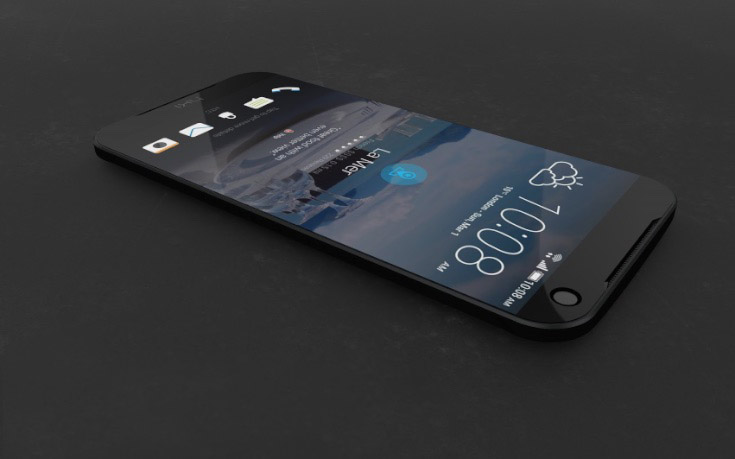
HTC is working on its most advanced smartphone till date, to regain the lost market share after releasing series of not so successful smartphones. Specifications of the yet to be unveiled device, codenamed as ‘Perfume' is supposed to be sold in the market as the One M10.
Android 6.0.1 Marshmallow will be supported and HTC's Sense 8.0 UI will customize the smartphone. The 5.1-inch Perfume will be very first smartphone with a 1440 x 2560 QHD display - which seems like a AMOLED type, as per the person who gots hands-on with the prototype. HTC will also bundle a fingerprint scanner, embedded in the home button just like the Samsung Galaxy.
This device is powered by Qualcomm's latest top-notch processor, the Snapdragon 820 system-on-a-chip backed by Adreno 530 graphics. The prototype had 4GB of RAM and 23GB of free internal disk space (complemented by a microSD slot) - which makes it 32GB total, excluding operating system and rest of the preloaded software. There might be difference in the design of the prototype and the final device.
Perfume will feature a 12-UltraPixel snapper in the back which will also have laser-assisted autofocus. Both of the cameras in the front and back will have optical image stabilization. There is a drawback when it comes to the quality of sound - there won't be any Boomsound audio experience.
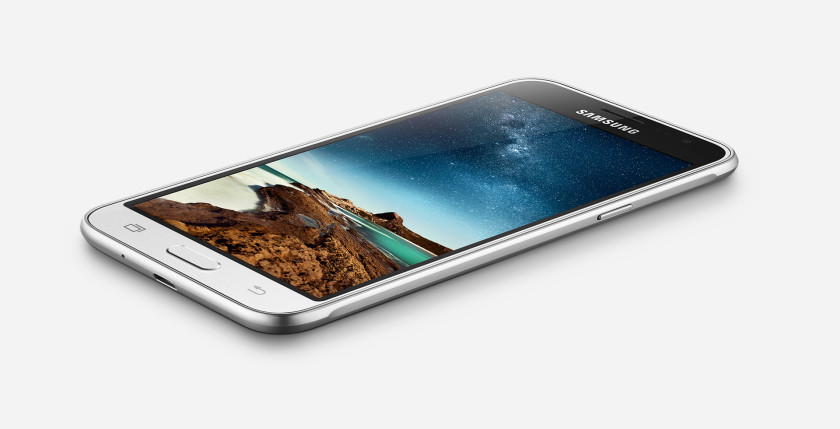
Samsung has added a new budget phone to the J series in the Chinese market after making many unofficial appearances. In terms of specifications the new phone, Galaxy J3⑥ is almost similar to Galaxy J5 and Galaxy On5 (launched in India this month). It is available in the chinese website and in every listing ⑥ is listed in the title.

A Super AMOLED 5-inch HD display and big battery (2,600 mAh) are the most important features here, given that they are the two features that aren't quite common on budget devices. The J3⑥ sports an unspecified quad-core processor clocked at 1.2GHz, 1.5GB of RAM, an 8-megapixel rear camera, a 5-megapixel front-facing camera, and 8GB of expandable storage. The phone's width is of 7.9 mm, which also matches with the J5.
The software is powered by Android 5.1.1 Lollipop along with Samsung's latest TouchWiz UX, with option to remove preinstalled apps (facility is available only in China). The Korean company is also giving 72 yuan (roughly $11) worth of downloadable games prepackaged in the device, although the price of the handset is not yet out. It is expected that the price should be close to $200. The phone is exclusive to China Telecom, and you can check out the list of stores to find out the availability from the link given below:

Samsung's been advocating the benefits of AMOLED displays for years, but it's doing it more frequently lately because it recently released its Galaxy Tab S 10.5 and Galaxy Tab S 8.4, the world's first high-res Super AMOLED tablets.
Without going into technical details, Samsung posted an infographic that shows why Super AMOLED screens are better than the LCD ones. Among the listed reasons you'll find a higher contrast ratio, wider viewing angles, and more accurate colors. Check the Infographic below.

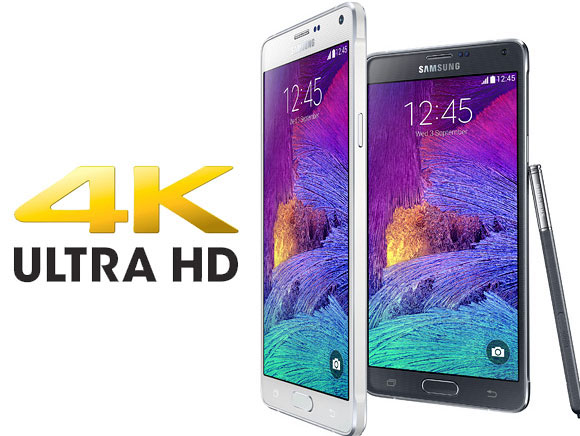
Samsung has been teasing its development of a 4K AMOLED display for a long time now, but now a new piece of information suggests the first phone to brag with it is the Galaxy Note 5.
According to a new Samsung display roadmap, a Samsung 4K AMOLED screen is 6" in diagonal and packs a pixel density of 743ppi is coming on 2015.
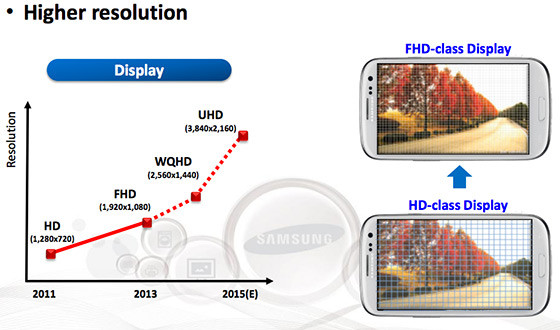
This information is not confirmed yet, it's very early to say, but is highly likely for Samsung to use this display on its upcoming Phablet. The Galaxy Note family of smartphones grow ever so larger in terms of display, so a 6" would be a logical evolutionary step for the Galaxy Note 5.
Moreover, recent rumors suggest that Galaxy Note 5 will be powered by an Exynos 7420 Octa-core chipset, which would have four Cortex-A57 cores + four Cortex-A53.

A New Galaxy note will be coming next year for sure and the korean giant labs is already preparing for it. Samsung has been teasing its development of a 4K AMOLED display for a long time now, but now a new piece of information suggests the first phone to brag with it is the Galaxy Note 5.
According to a new Samsung display roadmap, a Samsung 4K AMOLED screen is 6" in diagonal and packs a pixel density of 743ppi is coming on 2015.

This information is not confirmed yet, it's very early to say, but is highly likely for Samsung to use this display on its upcoming Phablet. The Galaxy Note family of smartphones grow ever so larger in terms of display, so a 6" would be a logical evolutionary step for the Galaxy Note 5.
Moreover, recent rumors suggest that Galaxy Note 5 will be powered by an Exynos 7420 Octa-core chipset, which would have four Cortex-A57 cores + four Cortex-A53.

Weibo has long since been the ultimate place to find awesome leaks and this one is no exception either. If the news does turn out to be true, then it would truly be awesome for fans of the Chinese smartphone maker Xiaomi. It should be noted that although Samsung is currently leading the pack with their new generation of bezel-less beauties (Galaxy S8/S8+), it was Xiaomi who reinvented the genre with the Mi Mix after the Sharp Aquos began the trend back in 2014.
According to the report, the highly anticipated Mi Mix 2 and Mi Note 3 are likely going to sport curved AMOLED displays made by Samsung. Given that Samsung's curved AMOLED displays are inarguably the best in the business, it looks like we are in for some seriously stunning smartphones from Xiaomi this year. The only gripe is that those models have so far not been released outside China. Let' hope that the Chinese manufacturer changes up its strategy this year around.
Via: The Android Soul
Saikat Kar (tech-enthusiast)
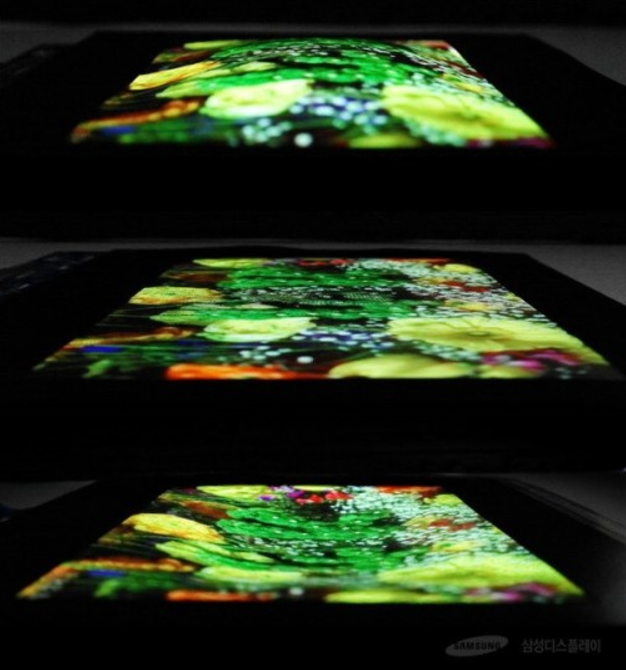
In accordance with their earlier announcement that they are going to present an industry-first stretchable OLED panel at the SID 2017, Samsung has just unveiled a 9.1-inch stretchable AMOLED panel that's built on LTPS (Low Temperature PolySilicon) technology. In addition to being stretchable, the display was fully capable of supporting multitouch as expected. Samsung is already the market leader in AMOLED panel manufacturing and this latest piece of tech further cements the Korean company's name on the top of the list.
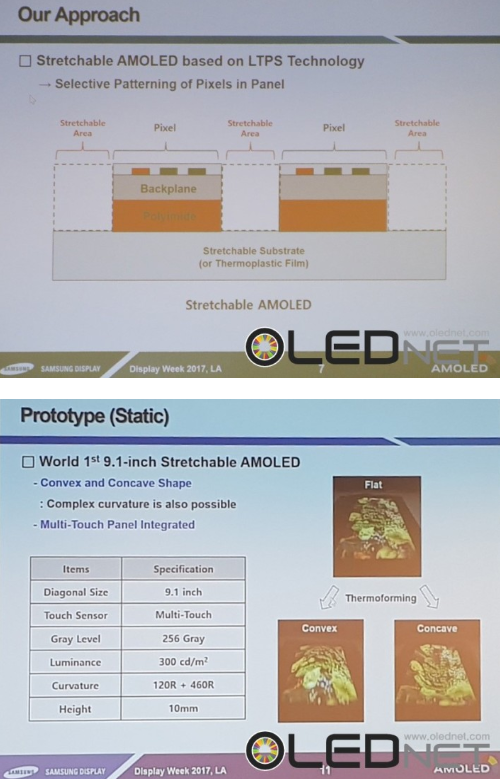
The documents accompanying the display states a lot of details about the panel, but the highlight is the ability of the display to be stretched both in concave and convex designs. This leads us to the most important question of them all; what will Samsung be using it for? Will we be seeing a tablet sporting that remarkable panel anytime soon? Well, the answers to those questions remain a mystery for now because nothing of the sort was revealed by Samsung. Nevertheless, it will probably be a while before Samsung brings the technology to consumers. Then again, maybe we will see something revolutionary from the tech giant sooner than anybody thinks.
Saikat Kar (tech-enthusiast)
Via: SamMobile
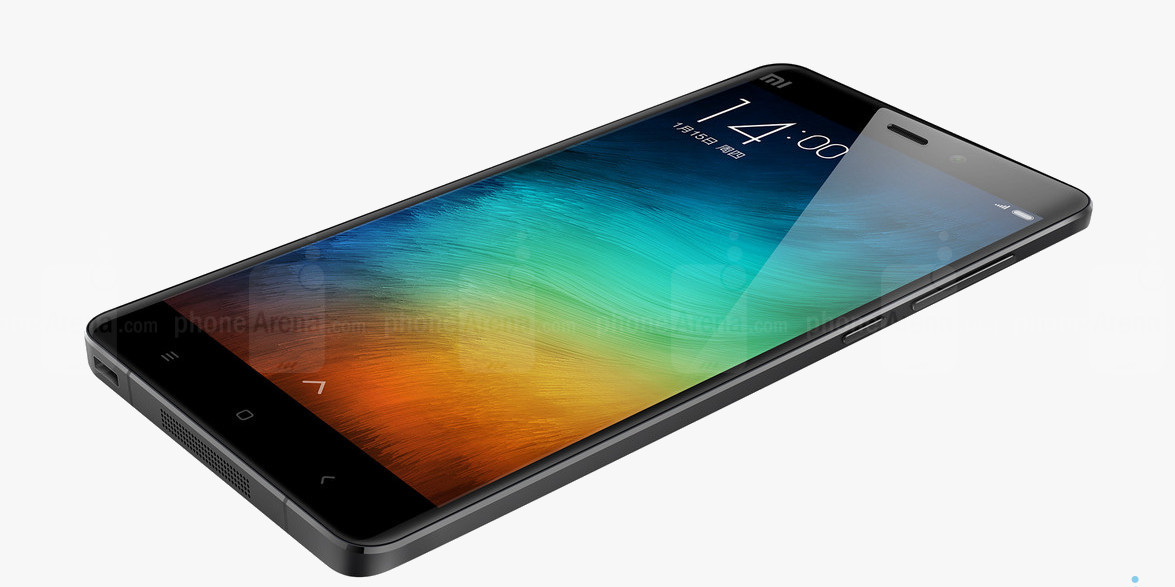
If there's something even the greatest critique of Samsung will admit, then that would be the fact that the Korean company simply makes the best display panels in the mobile industry. In fact its display department is so strong that it is literally making billions from the competition (read Apple) by selling them their OLED panels! In a recent news post by The Investor, Chinese smartphone giant Xiaomi is about to become another OLED customer for Samsung Display. This doesn't really come as surprise given the monopoly that Samsung holds in the mobile OLED panel manufacturing industry.
If the report is true then the Xiaomi Mi 7 will feature a 6.01-inch OLED panel supplied by Samsung, but whether or not it will be a QHD display is something that is unclear at this time. The shipment order at the moment stands at 3.2 (1 million in the first month, followed by the rest in the next) million units approximately, which should start reaching Xiaomi's manufacturing units by December 2017 -January 2018. This agreement is reportedly a result of the deal between Xiaomi and LG for 5.49-inch OLED panels breaking due to operational delays on LG's part.
Via: The Investor
Saikat Kar (tech-enthusiast)
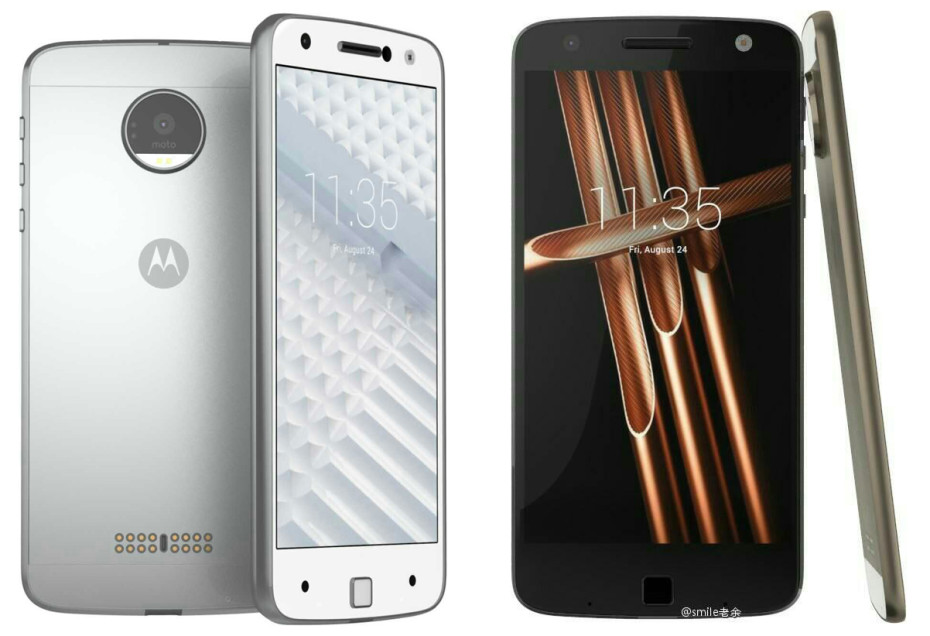
Lenovo has just unleashed a brand new series, which will replace the Moto X series of smartphones, starting from 2016. Both the phones in the new Z-series will come with top tier specs like a SD 820 CPU, a 5.5-inch QHD panel, 4GB of RAM and even the choice for 32GB/64GB in-built storage (along with expandable SD card slots). The regular Moto Z will sport a 13-megapixel rear sensor with laser autofocus, optical image stabilization and a dual tone LED flash for pitch dark conditions. On the front, there's the 5-megapixel snapper with a dedicated selfie-flash and a wide angle lens for group selfies. All this will be powered by the Quick charging 2,600mAh battery inside the Z.
The Moto Z Force has the bigger 3,500mAh battery and a shatterproof glass on the front. Lenovo calls the glass "ShatterShield" and they are confident that it cannot be broken by even the roughest of falls. The thicker and more premium device also features a higher resolution 21-megapixel sensor with phase detection laser autofocus, optical image stabilization and an aperture of f/1.8 for low-light photography. In spite of the flagship specs, what we did not like is the missing headphone jack that we have grown accustomed to. Although an USB Type-C to headphone adapter is included in the box, it means that you cannot simultaneously use the Type-C port for charging or data syncing, while listening to the headphones.

In addition to the missing 3.5mm jack, the two Moto phones also bring something else that the market is just getting accustomed to. Both phones have 16 magnetic dots at the lower-back area and they are equipped to connect with the "Moto Mods." Similar to what we saw with the LG G5 modular phone that was released earlier this year, the Moto Mods are modular accessories created specifically for the Moto Z smartphones to enhance the device's already impressive capabilities. There's the InstaShare Projector mod and some stylish case mods, but we found the JBL Soundboost mod to be the most impressive with its twin 3W speakers and a 1,000 mAh battery to boost the phone's usage time.

As is evident, the Moto Z and the Moto Z Force has a LOT to offer, but you will have to wait till September to get your hands on one, if you are outside the US. Verizon in the US however, will release their "Droid Editions" sooner.
Author: Saikat Kar (tech-enthusiast)

AMOLED panels are superior to LCD panels in color reproduction, brightness, contrast, saturation and power efficiency. This might raise the question, why AMOLED panels are not used more widely then? The answer "used to be" that AMOLED displays are more expensive to make compared to LCD panels. This however, is not a valid answer anymore because the manufacturing cost of an AMOLED panel has now fallen below even that of an LCD.
According to reports from IHS Technology, production costs for AMOLED panels have become lesser than even the LCD in just twenty-four months time and even that was predicted roughly two years ago by experts! As things stand now in Q1 2016, a 5" FHD AMOLED display designed for smartphones should cost around $14.30 to manufacture. The same 5" FHD LTPS LCD panel on the other hand is manufactured at a cost of $14.60 apparently. Once you consider an older piece of data which shows that the same AMOLED panel would cost the manufacturer $17.10 to make in 2015, while the LCD panel was only slightly more expensive at $15.70, things start to look a lot more impressive.
Keep in mind that the LTPS LCD (low Temperature Poly-Silicon Liquid Crystal Display) mentioned is the same one that is widely used and considered as the most efficient version of the LCD technology. It seems that the days of the LCD are numbered as smartphone displays will most likely soon be dominated by the mighty AMOLED now.
© 2023 YouMobile Inc. All rights reserved






